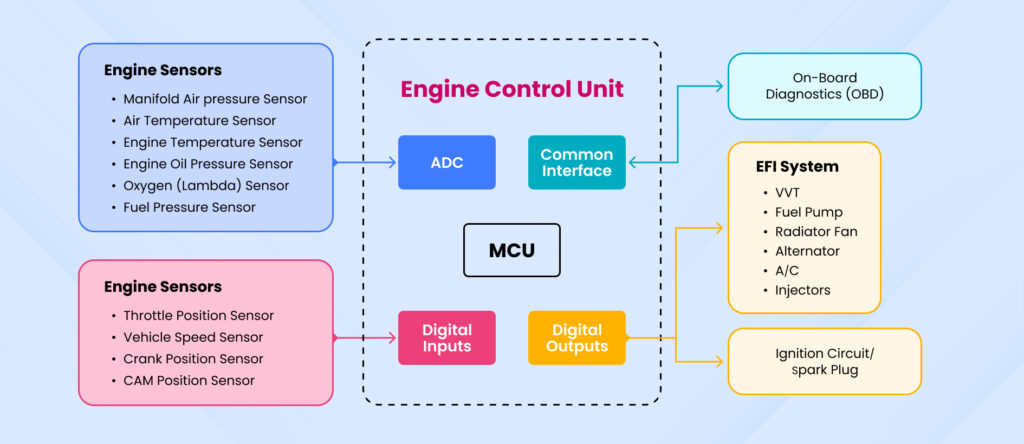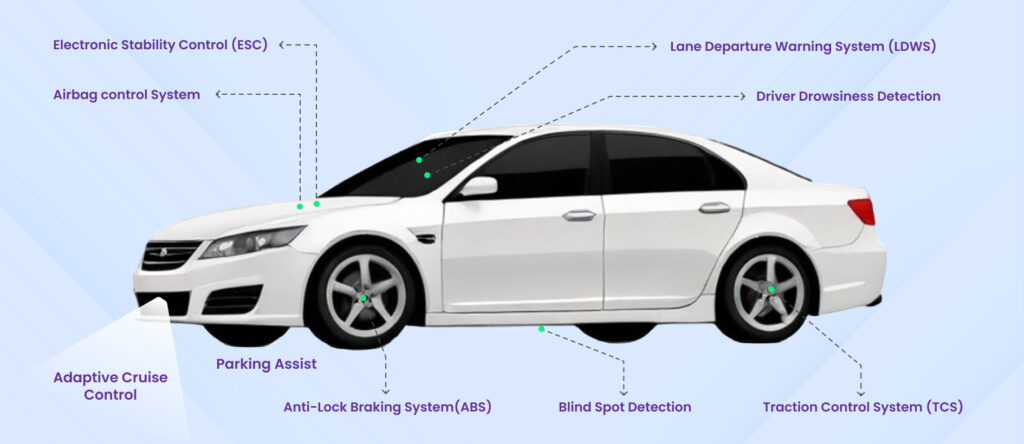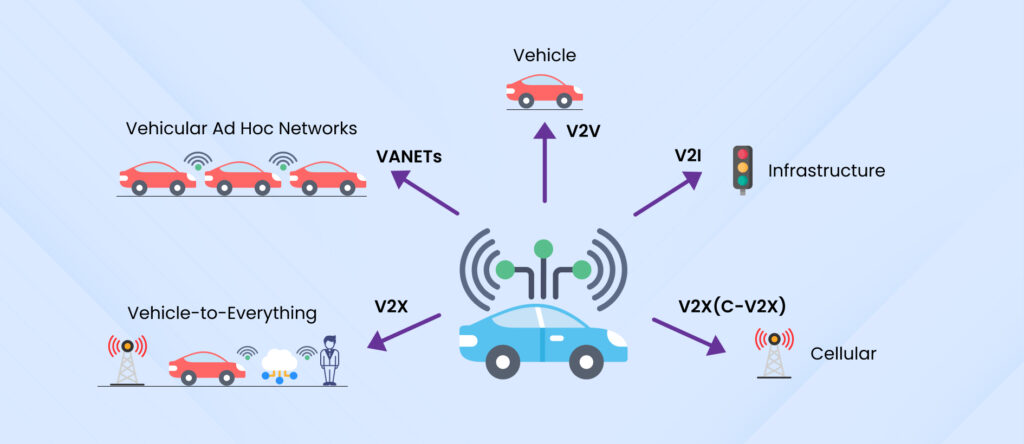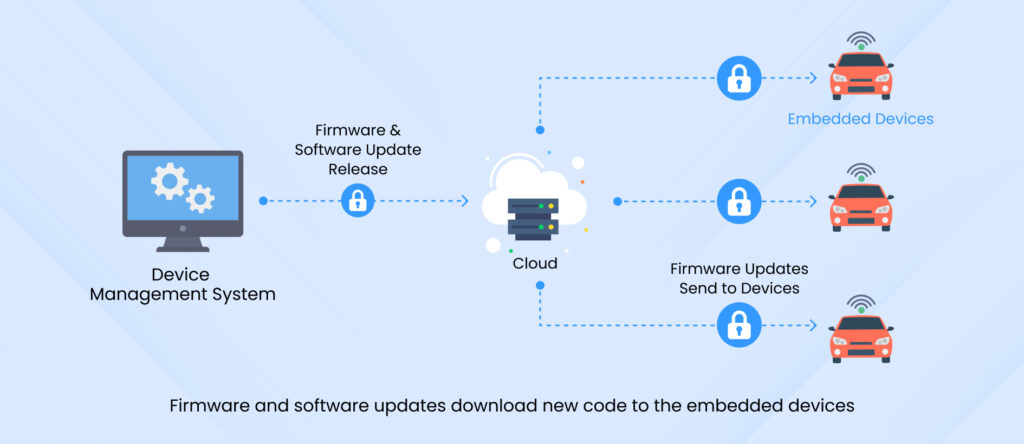Introduction to Automotive Embedded Systems
Automotive Embedded Systems are computer systems that are Embedded into an Automobile in order to control it. They are designed to perform dedicated functions within a larger Mechanical or Electrical system. With the integration of Embedded Systems, the Automotive industry has made a great revolutionary transition as it enhances vehicle intelligence and connectivity. Embedded Systems have played a crucial role in the rapid development of the Automotive industry.
Embedded Systems have applications in multiple areas of vehicle functionality, it is mainly used in infotainment systems which includes features like multimedia playback, navigation, and smartphone integration.It is also used in several safety systems like Anti-lock Braking System(ABS), Advanced Driver Assistance System(ADAS) and many more.
With the rapid advancements in Automotive Embedded Systems, they have been a boon to the industry as these systems are now used in most parts of the cars enhancing the vehicle’s functionality, safety, and efficiency. In this Blog, we will be discussing the different applications and various uses of Embedded Systems in the Automotive industry.
Embedded Systems in Engine Control Units (ECUs)

Embedded Systems in Engine Control Units (ECUs) play a vital role in modern Automotive engineering. These ECUs were initially designed to perform basic functionalities such as controlling the engine, transmission, and other critical systems within the vehicle. As technology progressed, there was a notable integration of micro controllers and sensors, leading to the evolution of electronic systems in vehicles.
Fuel injection control is one of the main functions where the system carefully and precisely controls the quantity of fuel injected into the engine cylinder,it also controls the timing of fuel injection. This will help to enhance fuel efficiency, improve performance of the engine and also helps to reduce emissions.
These systems also manage the Ignition timing by controlling when the spark plug ignites the air-fuel mixture in the cylinder. This will help us avoid engine knocking and also ensure optimal combustion.There are many more advancements and functions used by different Automotive industries according to their need; some of them include Air fuel ratio management, Idle speed control,Turbocharger control, valve timing adjustment, etc.
Safety and Driver Assistance Systems
Embedded Systems are fundamental to the advancement and efficiency of Automotive safety systems. They enhance vehicle safety, performance, and overall driving experience by integrating real-time data processing, decision-making, and control.
Advanced Driver Assistance systems (ADAS) use Embedded devices to help drivers in a variety of driving circumstances, improving vehicle safety and comfort. These systems monitor the environment around the car and give the driver real-time help or warnings using a combination of sensors, cameras, radar, and complex algorithms.
Here are some examples of Automotive safety systems and driver assistance systems that rely on Embedded Systems:

1.Anti-lock Braking system (ABS):
The ABS technology plays a vital role in ensuring driver safety by preventing the wheels from locking up during breaking. This maintains a traction with the road which helps to maintain control. We can achieve this by installing wheel speed sensors in each wheel,these will constantly check how fast the wheel is turning. The information is then passed to the ABS control unit, after which the Hydraulic Modulator controls how much brake fluid pressure is sent to each wheel.
2.Traction Control System(TCS)
The TCS is highly useful on slippery roads and other dangerous conditions as the safety feature helps to keep a good grip between the car’s tires and the road. It works with the help of motion sensors which monitors both the speed in which the tires are spinning and also the speed of the vehicle. In case it is detected that any of the wheels are spinning faster than the speed of the vehicle, then the system will automatically slow the speed.
3.Electronic Stability Control (ESC)
ESC system has sensors which detect the starring wheel activity and also the speed of the wheels.The ESC system automatically activates to correct for oversteer and under steer when sensors detect that the driver is losing control. It returns the car to its intended course by applying or easing the brakes on each wheel. When the driver applies too much throttle, ESC applies brakes, engages the traction control systems, and modifies engine power to decrease speed.
4.Airbag Control System
The Airbag Control system uses several sensors to detect an accident and trigger the necessary firing circuits at the right time. Once the accident is detected using the sensors, the data is passed to the Airbag Control Unit, which acts as the brain of the system. This unit then evaluates the information and decides if airbag deployment is necessary and deploys the needed airbags.
5.Lane Departure Warning System (LDWS)
This LDWS does not take control of the vehicle but notifies the driver anytime the car moves out of the lane unexpectedly without a turn signal. This will help to prevent run-off-road crashes. In this system, the cameras attached near the rear view mirror capture pictures of the road ahead and identify the lane markings on the road. The image is then processed, and the system alerts the driver when the vehicle is veering out of the lane.
6.Adaptive Cruise Control (ACC)
The ACC is a type of Advanced driver assistance system which uses a radar laser sensor or a camera setup to detect the car approaching any other vehicle ahead of it. Once the system receives information from the on board sensors, the algorithms calculate the appropriate speed and adjustments needed to maintain a safe distance. The system has a throttle control to adjust the engine power as needed and a break control to apply breaks when necessary.
7.Blind Spot Detection(BSD)
BSD systems use sensors mounted on a car’s side mirrors or rear bumper, usually radar or cameras. These sensors keep an eye on the space directly in front of and slightly behind the car. The device recognizes the presence of another vehicle when it moves into the monitored blind spot region. When a vehicle is identified as being in the blind spot, the system notifies the driver visually on the side mirrors or via vibrations on the steering wheel.
8.Parking Assistance System
Parking Assistance Systems, also known as parking sensors or parking aid systems, utilize Embedded Systems to help drivers park their vehicles safely and efficiently. These systems use a combination of sensors, micro controllers, and algorithms to detect obstacles around the vehicle and provide feedback to the driver. Ultrasonic Sensors are the most common type, typically mounted on the front and rear bumpers.
9.Driver Drowsiness Detection
Driver drowsiness detection systems are designed to enhance road safety by monitoring the driver for signs of fatigue and providing alerts if drowsiness is detected. These systems use various technologies and methods to assess the driver’s state and ensure they remain alert while driving. some of the methods are Facial Monitoring,Behavioral Analysis, and Physiological Monitoring.The MCU then integrates data from all sensors and applies machine learning algorithms to determine the likelihood of driver drowsiness. If drowsiness is detected, the system alerts the driver through visual or audible alerts.
Vehicle Networking and Communication
Vehicle networking and communication in Embedded Automotive systems play a crucial role in the development of modern, connected, and intelligent vehicles. These systems facilitate data exchange between various vehicle components and external networks, enhancing safety, efficiency, and driving experience.
External Vehicle Communication

V2V (Vehicle-to-Vehicle) Communication: Enables vehicles to communicate with each other to share information about their speed, position, and heading, enhancing collision avoidance systems.
Vehicular ad hoc networks (VANETs) :Vehicular Ad Hoc Networks (VANETs) are a specialized subset of Mobile Ad Hoc Networks (MANETs) that enable vehicles to communicate with each other and with nearby infrastructure in a decentralized manner.
V2I (Vehicle-to-Infrastructure) Communication: Involves communication between vehicles and road infrastructure like traffic lights and road signs to improve traffic flow and safety.
V2X (Vehicle-to-Everything) Communication: A general term that includes V2V, V2I, and communication with other elements like pedestrians and cloud services.
Cellular V2X: Developed by the 3rd Generation Partnership Project (3GPP), C-V2X is part of the broader V2X (Vehicle-to-Everything) ecosystem and is an evolution from traditional Dedicated Short-Range Communication (DSRC) systems.
In-Vehicle Networking (IVN)
CAN (Controller Area Network): This is a serial communication bus which communicates between the ECU’s through a single pair of wires, reducing cable wiring.
LIN (Local Interconnect Network): LIN is a lower-cost, slower-speed network for simpler devices where the performance of CAN is not required. As CAN bus was too expensive to be implemented in every component of the car, the need for LIN arose.
FlexRay: FlexRay is a communication bus that is divided into static and dynamic segments for time-triggered and event-triggered communications. Its architecture ensures high data speeds and fault tolerance while working on a time cycle.
MOST (Media Oriented Systems Transport): Used for multimedia and infotainment systems, providing high bandwidth for audio and video data.MOST technology is the industry standard for high-bandwidth multimedia networking in automobiles. It can be utilized to directly connect numerous consumer products to one another or in a network configuration.
Ethernet: Increasingly used in modern vehicles due to its high-speed capabilities and support for complex applications such as ADAS (Advanced Driver Assistance Systems) and autonomous driving.
Powertrain and Transmission Control
Powertrain and transmission control systems in Automotive Embedded Systems are crucial for managing the engine and transmission functions to ensure optimal vehicle performance, fuel efficiency, and emissions control. These systems utilize Embedded Controllers and Software Algorithms to monitor and adjust various parameters in real-time.
Embedded Systems within the Powertrain control module(PCM) collect data from various sensors, such as oxygen sensors, throttle position sensors, mass airflow sensors, and crankshaft position sensors. These sensors provide real-time data about the engine’s operating conditions.
The PCM uses micro controllers to process the data collected from sensors in real-time. These micro controllers execute complex algorithms to determine the optimal engine and transmission parameters. The need for PCM and its functions keep increasing day by day as the technologies in new cars keeps advancing. It also plays a major role in enhancing coordination and communication between other modules.
The transmission control unit comprises micro controllers and software algorithms to manage the transmission operations. Some of the sensors that it uses are speed sensors, temperature sensors, throttle sensors, and gear position sensors. Real time processing is one of its main functions as it receives data from various sensors and makes instantaneous adjustments to shift the gear,shift timing, and clutch operation.The system also learns from the driver’s habits and adapts shift patterns accordingly.
Cybersecurity and OTA Updates

There are several threats that can be caused in these Automotive systems, for example, the vulnerabilities in wireless interfaces such as wifi or bluetooth can be exploited by attackers to gain unauthorized access to vehicle systems. Attackers can also physically access the vehicle, connect to its internal networks, and manipulate its actions. The several internal communication networks like the CAN bus can also be exploited to control the functions of the vehicle.
These incidents can be prevented by incorporating appropriate cybersecurity protocols. These protocols include robust encryption to safeguard data in transit and at rest, Strong authentication mechanisms to ensure only authorized access, and intrusion detection systems to monitor for and respond to suspicious activities. Secure boot processes and firmware updates verify the integrity and authenticity of software before execution. Additionally, firewalls and gateways are used to segment networks and control data flow between vehicle subsystems. Adherence to standards such as ISO/SAE 21434 and UNECE WP.29 ensures comprehensive cybersecurity practices are implemented throughout the vehicle’s lifecycle.
The Over-The-Air (OTA) updates are very advantageous as this technology allows the manufacturers to deploy bug fixes, security patches, and new features without requiring physical access to the vehicle. This technology is a method for wirelessly delivering software, firmware, and configuration updates to vehicles. Effective OTA implementation also involves pre-update checks, post-update validation, and continuous monitoring to ensure system integrity and performance.
Conclusion
Automotive Embedded Systems have improved vehicle functionality, safety, and user experience, revolutionizing the Automotive industry. Innovation in the automobile sector is being driven by the ongoing development of Automotive Embedded Systems. These systems will become more and more crucial as cars become more autonomous and networked. More advanced features that improve user experience, efficiency, and safety may be added in the future. Understanding real-world applications of Automotive Embedded Systems provides insight into their critical role in shaping the future of transportation.
| Serial No. | Related Blogs | Links |
|---|---|---|
| 1. | The Future Scope of Embedded Systems : Trends and Predictions | Click Here |
| 2. | Skilling in Embedded Systems & Career Opportunities | Click Here |
| 3. | How Embedded Programming Is Changing Due to IoT? | Click Here |
People Also Ask (PAA)
Automotive Embedded Systems commonly use various types of sensors to enhance vehicle performance, safety, and driver assistance. Key sensors include wheel speed sensors,radar and lidar sensors, ultrasonic sensors ,temperature sensors ,pressure sensors.These sensors collectively enable real-time data processing, ensuring the vehicle operates efficiently and safely under diverse conditions.
Embedded Systems control the battery management system (BMS), which monitors and regulates battery health, charging, and discharging processes. They also oversee powertrain operations, including motor control and energy distribution, ensuring smooth acceleration and regenerative braking.
Future trends in Automotive Embedded Systems are expected to focus on advancements in autonomous driving, increased connectivity, and enhanced safety features.The rise of vehicle-to-everything (V2X) communication will enable cars to interact with each other and infrastructure, improving traffic management and reducing accidents. Additionally, the integration of artificial intelligence and machine learning will enhance predictive maintenance and personalized driving experiences.
